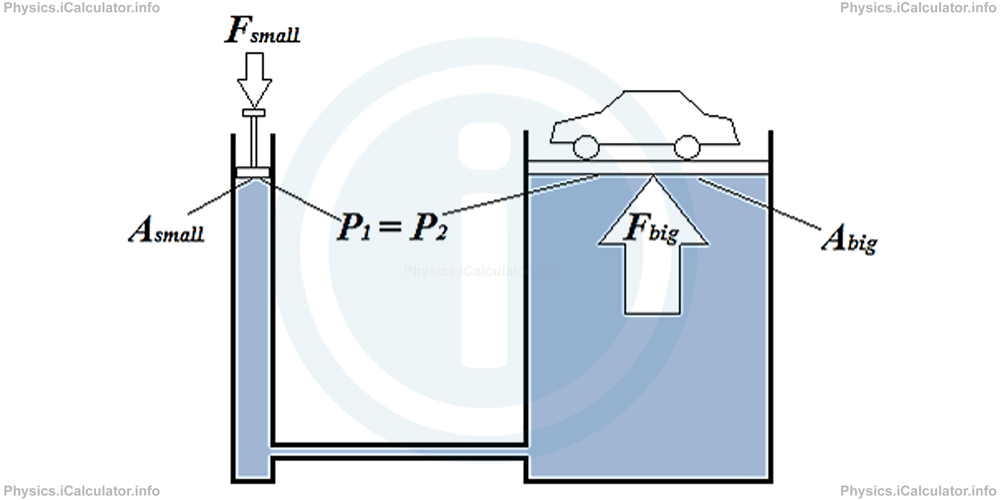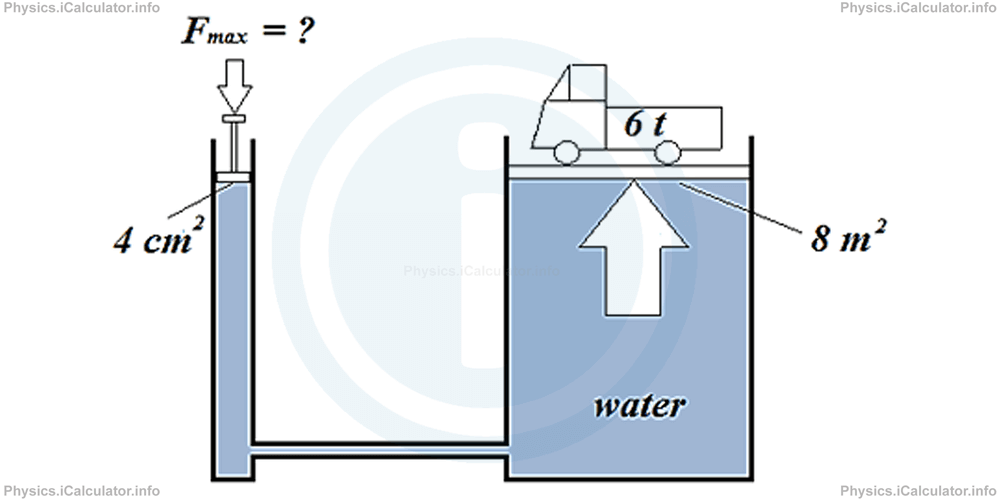Menu
Physics Lesson 9.3.2 - Pascal's Principle
Please provide a rating, it takes seconds and helps us to keep this resource free for all to use
Welcome to our Physics lesson on Pascal's Principle, this is the second lesson of our suite of physics lessons covering the topic of Liquid Pressure. Pascal's Principle, you can find links to the other lessons within this tutorial and access additional physics learning resources below this lesson.
Pascal's Principle
The way in which pressure acts inside a liquid, was first discovered and outlined by the famous French scientist Blaise Pascal. For this reason, the unit of pressure bears his name, i.e. Pascal. Thus, pressure in liquids obeys to a universal rule, known as "Pascal's Principle" which says:
"In a fluid at rest in a closed container, a pressure change in one part is transmitted without loss to every portion of the fluid and to the walls of the container."
This principle is particularly useful in communicating vessels, in which we can use a small force in a small area to transmit pressure in a larger area and in this way, to increase the value of force. Look at the figure below.

Thus, since liquid pressure is transmitted equally in all positions of the communicating vessel, we obtain
or
Pascal's principle is the operating principle of all hydraulic machines, i.e. in mechanisms that use the water pressure to lift heavy weights or in other words, to apply large forces as an output by applying a very small force at input, as the one shown in the above figure. As examples in this regard we can mention hydraulic lifts, hydraulic press machines, hydraulic steering wheels, etc.
Example 3
A hydraulic lift has a 4 cm2 area at the button side and it is used to lift a maximum load of 6 tons as shown in the figure.

What is the maximum force the user can apply on the button (left side) of this hydraulic lift if the wider area is 8 m2? For convenience, take g = 10 m/s2.
Solution 3
First, let's convert the units into the standard ones. We have:
A1 = 4 cm2 = 0.0004 m2 = 4 × 10-4 m2
A2 = 8 m2
F2 = m × g = 6 t × 10 m/s2 = 6000 kg 10 m/s2 = 60 000 N = 6 × 104 N
F1 = ?
Given that pressure is transmitted equally in all directions of a communicating system (based on Pascal's Principle), we can write for pressure at the positions where the two forces act:
and therefore,
Substituting the known values, we obtain
8 × F1 = 4 × 10-4 × 6 × 104
8 × F1 = 24
F1 = 3 N
Thus, by only 3 N of applied force, we can lift a 6 t object using this kind of hydraulic lift.
You have reached the end of Physics lesson 9.3.2 Pascal's Principle. There are 2 lessons in this physics tutorial covering Liquid Pressure. Pascal's Principle, you can access all the lessons from this tutorial below.
More Liquid Pressure. Pascal's Principle Lessons and Learning Resources
Whats next?
Enjoy the "Pascal's Principle" physics lesson? People who liked the "Liquid Pressure. Pascal's Principle lesson found the following resources useful:
- Pascal Feedback. Helps other - Leave a rating for this pascal (see below)
- Density and Pressure Physics tutorial: Liquid Pressure. Pascal's Principle. Read the Liquid Pressure. Pascal's Principle physics tutorial and build your physics knowledge of Density and Pressure
- Density and Pressure Revision Notes: Liquid Pressure. Pascal's Principle. Print the notes so you can revise the key points covered in the physics tutorial for Liquid Pressure. Pascal's Principle
- Density and Pressure Practice Questions: Liquid Pressure. Pascal's Principle. Test and improve your knowledge of Liquid Pressure. Pascal's Principle with example questins and answers
- Check your calculations for Density and Pressure questions with our excellent Density and Pressure calculators which contain full equations and calculations clearly displayed line by line. See the Density and Pressure Calculators by iCalculator™ below.
- Continuing learning density and pressure - read our next physics tutorial: Gas Pressure
Help others Learning Physics just like you
Please provide a rating, it takes seconds and helps us to keep this resource free for all to use
We hope you found this Physics lesson "Liquid Pressure. Pascal's Principle" useful. If you did it would be great if you could spare the time to rate this physics lesson (simply click on the number of stars that match your assessment of this physics learning aide) and/or share on social media, this helps us identify popular tutorials and calculators and expand our free learning resources to support our users around the world have free access to expand their knowledge of physics and other disciplines.